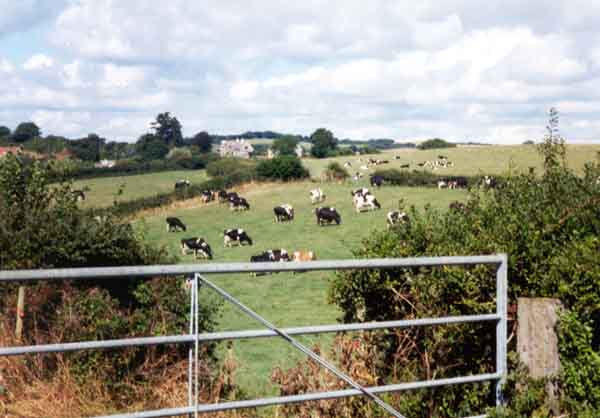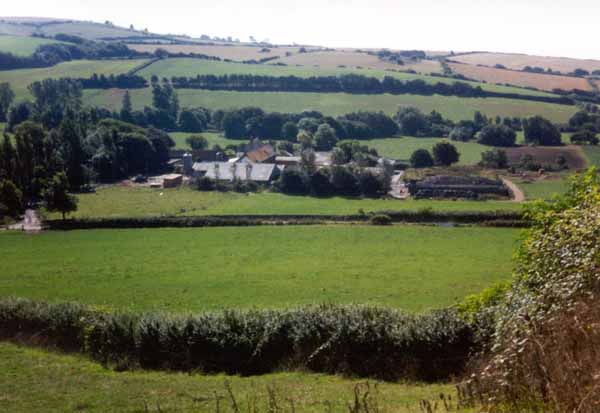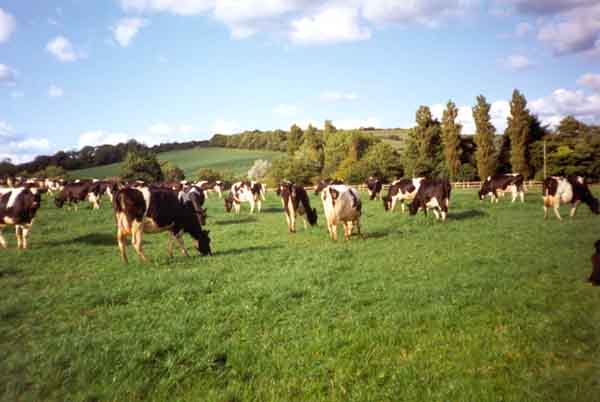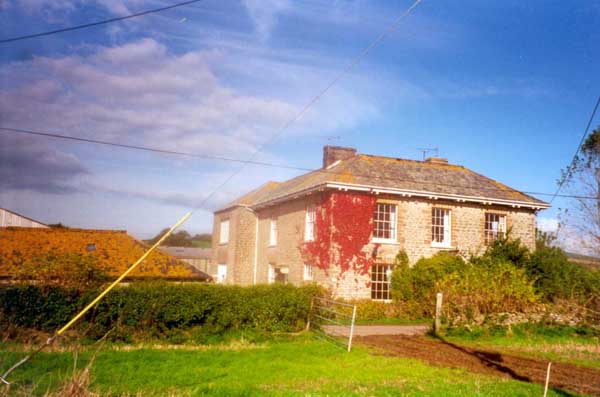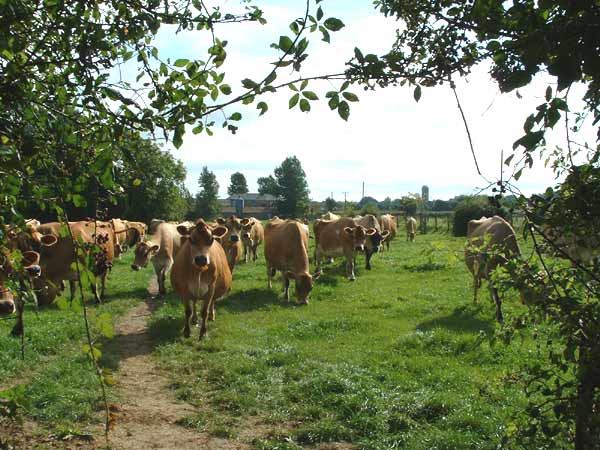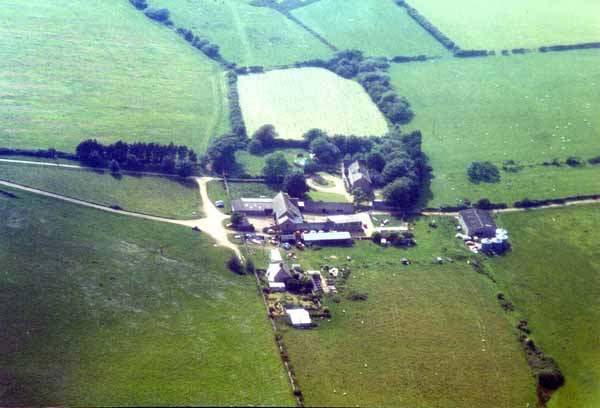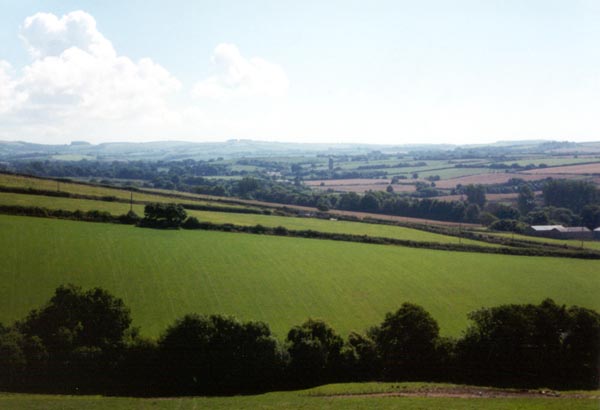Farming in Burton BradstockBy nature of the topography surrounding the village of Burton Bradstock, the farming within the Parish is still pastorally based. Originally, all the farms would have supported dairy herds, with cows walking through the village to their grazing being a daily sight. Indeed, when the flax mill was operating, farming was the core of village life and largely responsible for its prosperity.
There were at least ten working farms in the Parish, all of which produced milk and provided each farmer with his sole income. There are now only three working farms providing full time employment for their resident owners (click below to see map) http://www.streetmap.co.uk/streetmap.dll?grid2map?X=350500&Y=88500&zoom=3: Graston Farm (along Annings Lane)
Graston Farm is a specialist dairy farm producing milk from its 180 Friesian dairy cows, most of which is transported daily by road tanker to London to be bottled. The crops grown are grass and maize. The grass is mainly for grazing but some is made into silage. The maize is sown in spring and harvested in the autumn being mixed with grass silage and fed to the cows over the winter months. One benefit of maize is the fact that it helps to recycle the copious amounts of dung produced by the cows and which is ploughed into the seed bed before the seed is sown. Visitors are welcome to view the milking with a specially constructed gallery overlooking the milking parlour. (For details telephone: 01308 897603)
Modbury Farm (along the Litton Cheney Road)
Modbury Organic Farm is principally a Dairy Farm with 100 pedigree Jersey dairy cows providing the Organic Cream and Milk for their Farm Shop. Modbury sits on land that holds the ruins of the medieval village of Modbury, and Sturthill. Farmed since the 1700's, the fields have centuries old boundaries, with names such as "Mill Hams" and "Long Strap. The Farmhouse, dating from the 1850's, was originally the Dairy House for Berwick Farm, and the old 'cheese room' has now become the farm shop. Besides the farm's own milk and cream, their own naturally reared saddleback pork, Jersey cross beef and summer organic vegetables are also available in the shop along with a range of other products, many of which are locally sourced.
Cogden Farm (along the coast road to Weymouth)
This is a specialist sheep farm with grass being their main feed. The ewes lamb in spring and the lambs are then sold for meat throughout the summer and autumn. There are some arable crops grown in the Parish being mainly wheat, barley, rape and flax. The farmers involved with these crops farm larger farms outside the village and bring in men and machinery as the season demands. The wheat and barley are mostly grown for animal feed. The rape, which is identified by its bright yellow flower in the spring, is harvested for its seed in July and August and would be sold to a processor who crushes it for the oil. This is then used mainly for industrial purposes with the residue meal being fed to livestock. Flax is not the same variety as would have been grown a century or more ago - it used for specialist fabrics and paper. It is characterised by its white or blue flower in the late spring/early summer. As with the village itself, the land in and around Burton Bradstock was for many years part of the Pitt Rivers family estate, who were one of the handful of land owners owning the majority of the land in Dorset, and who still farm a significant area of North Dorset. (Ref: Dorset County Museum). The majority of the land and property was sold in the 1950's. If anyone looks carefully they will still see evidence of the comprehensive flood irrigation system developed when the monks from Abbotsbury farmed the land. There are stone built sluices still intact along the River Bride which diverted the water into a series of drainage channels across the meadows. This also had the effect of increasing the fertility of the soil by virtue of the organic matter left behind when the water receded. Further evidence of farming methods by our ancestors can be seen at the Bredy Farm Museum which is situated along Bredy Lane. Financial pressures and changing consumer demands have determined the pace of change within the local farming industry with diversification into tourism, light engineering and even the manufacture of sports cars! Thankfully, the farm land surrounding the village remains largely unspoilt with a network of signed footpaths enabling walkers to enjoy the natural flora and fauna flourishing alongside modern day farming.
Andrew Bailey - Graston Farm If you would like to know more: Telephone 01308 897603 --------------------------------------------------------------------------------------------------- It is worth noting the Annual Local Agrictural Show where many aspects of local farming can be enjoyed see See: http://www.melplashshow.co.uk/ Further reading: "Farming - Discover Dorset Series" see Books & Publications |
